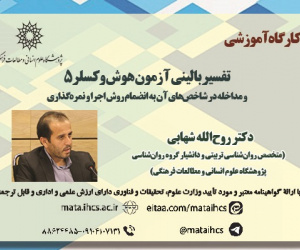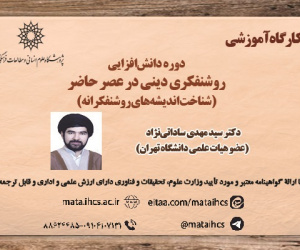تحلیل جنسیتی امید به آینده به تفکیک سطح توسعه یافتگی در شهر تهران (مقاله علمی وزارت علوم)
درجه علمی: نشریه علمی (وزارت علوم)
آرشیو
چکیده
زمینه و هدف: مقاله حاضر درصدد است با رویکردی جامعه شناختی و با در نظر داشتن تحولات اقتصادی و اجتماعی در شهر تهران، به تبیین چرایی و چگونگی کاهش و یا افزایش امید به آینده در بین زنان و مردان تهرانی به صورت جداگانه بپردازد. هدف اصلی مطالعه، تحلیل تفاوت های جنسیتی در امید به آینده و تأثیر سطح توسعه یافتگی مناطق مختلف شهر تهران بر آن است. روش و داده ها: در این پژوهش، ۱۲۰۰ نفر شامل مردان (۲۰ تا ۵۹ ساله) و زنان (۱۵ تا ۴۹ ساله) متأهل از مناطق مختلف شهر تهران («مناطق کم برخوردار و نیمه برخوردار» و «مناطق برخوردار و خیلی برخوردار») در سال ۱۳۹۷ با استفاده از روش نمونه گیری چندمرحله ای طبقه بندی شده با تخصیص متناسب انتخاب شدند. داده ها با استفاده از پرسشنامه محقق ساخته (با پایایی آلفای کرونباخ بالاتر از 744/0) گردآوری و با به کارگیری مدل معادلات ساختاری به تفکیک جنسیت تحلیل شدند. یافته ها: یافته ها نشان می دهد افزایش احساس ناامنی اقتصادی-اجتماعی، منجر به کاهش امید به آینده زنان ساکن در مناطق کم برخوردار و نیمه برخوردار و مردان ساکن در مناطق برخوردار و خیلی برخوردار می شود. افزایش اعتماد سازمانی و اعتماد عمومی نیز، امید به آینده را در بین مردان و زنان ساکن در مناطق کم برخوردار و نیمه برخوردار بهبود می بخشد. با افزایش سن، امید به آینده زنان در تمام مناطق شهر تهران و مردان ساکن در مناطق کم برخوردار و نیمه برخوردار کاهش می یابد. بحث و نتیجه گیری: با وجود ظرفیت ها و فرصت های امیدآفرین در شهر تهران، بازتولید نابرابری های طبقاتی و جنسیتی در توزیع فرصت ها، امید به آینده را به یک مسأله جدی تبدیل کرده و ظرفیت های آرزومندی را تحلیل برده است. پیام اصلی: تقویت چشم اندازهای نویدبخش و امید به آینده در شهر تهران مستلزم توزیع برابر فرصت ها در کلیه مناطق، برقراری عدالت جنسیتی و توجه به نیازها و دغدغه های ساکنین مناطق برخوردار و کم برخوردار است.Gender Dimensions of Hope for the Future: Analyzing Development Disparities in Tehran City
Background and Aim: This study, from a sociological perspective, aims to investigate the factors influencing hope for the future among men and women in Tehran, considering the economic and social changes there. It aims to uncover the mechanisms underlying the rise or decline of hope, with a focus on gender and regional disparities.
Data and Method: A total of 1,200 married men (aged 20-59) and women (aged 15-49) were selected through multi-stage stratified sampling with Probability Proportional to Size (PPS) from various regions of Tehran, including "less privileged and semi-privileged regions" and "privileged and highly privileged regions," in 2018. Data were collected using a researcher-designed questionnaire (Cronbach's alpha > 0.744) and analyzed through Structural Equation Modeling, with separate analyses by gender.
Findings: The findings show that increased socio-economic insecurity lowers hope for the future among women in less privileged and semi-privileged regions and men in privileged and highly privileged areas. Conversely, higher organizational and public trust levels improve hope for the future among men and women in less privileged and semi-privileged regions. Additionally, hope for the future declines with age among women across all Tehran regions and among men in less privileged and semi-privileged regions.
Conclusion: Despite the presence of hopeful opportunities and capacities in Tehran, the perpetuation of class-based and gender-based inequalities in opportunity distribution has made hope for the future a significant challenge.
Key Message: To strengthen hope for the future in Tehran, it is vital to ensure equal distribution of opportunities across all regions, promote gender equality, and address the concerns of residents in privileged areas.







